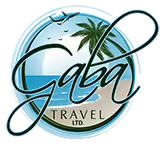Croatia is quickly becoming a popular destination for European travelers that are in search of sunny beaches, delicious food, and affordable prices. However, visitors who take the time to venture away from the coast will discover some of the country’s interior delights such as Plitvice Lakes National Park. This scenic spot is home to plenty of native wildlife and excellent hiking trails.
Image Credit: Zolakoma via Flickr and CC 2.0
The park holds a Trip Advisor Certificate of Merit and can be reached by public transportation. Split bound buses from either Zadar or Zagreb will stop at the entrance if travelers mention to their driver that they would like to be dropped off at the park’s main entrance. Transportation prices run about $13.75 USD from Zagreb and $12.45 from Zadar. Taxi prices average about $25.45 for a one-way fare from either place, which is a little more than a roundtrip bus fare. Seeing the area as part of a day tour from one of the nearby major cities is also a possibility.
A day pass for visiting the park costs $16.45 for adults during the low season and rises to $27 in the high season. However, in the low season a two day pass is the same price as a high season one day pass. Student admission costs about $12 so visitors will definitely want to be sure and bring their IDs if this applies to any members of their party. Many of the trail transfers that are provided for park guests are included in this ticket so it might not be as costly as it first seems. The trails are also well laid out so getting lost isn’t much of a possibility.
Image Credit: Zolakoma via Flickr and CC 2.0
Prospective visitors should pack a pair of comfortable walking shoes and a water bottle in their luggage so that they are prepared for their upcoming adventure. Despite all the beautiful waterfalls and crystal clear pools, travelers should be aware that no swimming is allowed here in an effort to protect the park’s ecosystems. So definitely leave the bathing suit at your hotel. If the restrictions limit the park’s appeal, travelers might want to look at alternate yet similar destinations like Krka National Park near Zadar where swimming is allowed.
There are some places to eat onsite but like most places with a captive audience, the food isn’t always the greatest. Therefore, travelers might want to pre-purchase their lunch and carry it along to eat in the park’s picnic area. Guests should also be aware that there are some steep trails in the park which not be suitable for wheelchair users and make their plans accordingly. Like other places in Europe, guard rails here are in scant supply so parents may want to keep a close eye on their kids to avoid any unfortunate accidents.
Image Credit: Tom Sartain via Flickr and CC 2.0
In the high season, the narrow trails can be quite crowded and may not be much fun for some prospective guests. Yet in the low season walking the roads in reverse can allow travelers their solitude, provided they don’t mind hiking uphill most of the time. However, arriving very early by private vehicle or staying very late and spending the at a nearby hotel are probably the best way to beat the crowds.
Leaving the park can be a bit of a hassle as the Croatian bus system isn’t always the most reliable. Travelers should check the posted schedules when they arrive so that they can make plans for their departure. It’s best to arrive at the entrance an hour or two ahead of your intended bus and be prepared to wait for it. However, there are plenty of places for travelers to stay if they either miss the last ride out or if they decide to spend a few days exploring the area. Available accommodations include a handful of mid-range hotels, a campground, and very reasonably priced homestays that can be arranged through the park’s travel office.
Image Credit: Josef Grunig via Flickr and CC 2.0
Sources: Wikipedia; WikiTravel; Trip Advisor; Google Currency Exchange








